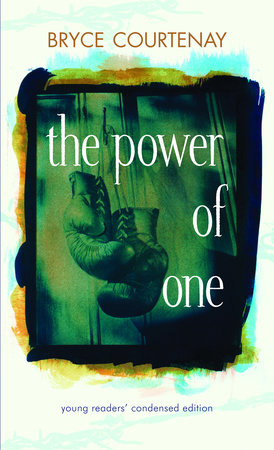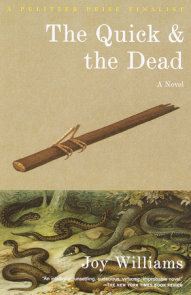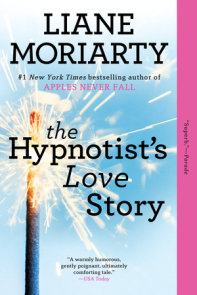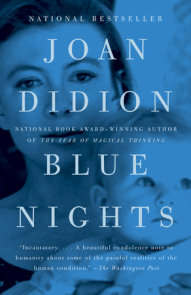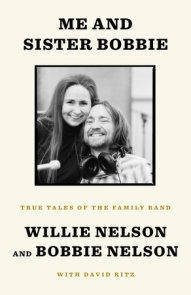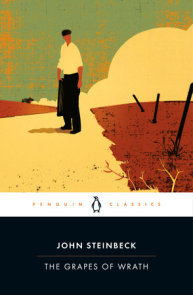READERS GUIDE
Freelance writer Paul Witcover discusses some of the key historical events that make up the backdrop of the novel The Power of One. What follows are his essays “The Boer War,” “World War II in South Africa” and “Origins and Early History of Apartheid.”The Boer War
Early in The Power of One, Bryce Courtenay writes, “The Boer War had created great malevolent feelings against the English, who were called rooineks. It was a hate that had entered the Afrikaner bloodstream and pocked the hearts and minds of the next generation” (pg. 3). As a rooinek attending an Afrikaner school, five-year-old Peekay experiences this hate firsthand when he is terrorized and abused by the sadistic Judge and his “council of war” (pg. 4). As Peekay grows older and is better able to defend himself with his fists and his wits, he is less often the victim of such casual brutalities, but he never completely escapes from the pernicious effects of Afrikaner hatred. The terms “Boer” and “Afrikaner” are synonymous.
That hatred had been nourished for almost a century by the 1930s, when The Power of One opens. A century of bloodshed, oppression, resentment . . . and war. The conflict known to history as the Boer War (1899—1902), which ended in the victory of the English, was actually the second war fought between the Boers and the British. The first took place from 1880 to 1881 and ended in victory for the Boers, though it was destined to be a short-lived triumph.
The Boers were fiercely independent farmers of mainly Dutch and German stock who went to what is now South Africa beginning in the late 1600s, seeking to make their fortunes and to practice their conservative brand of Protestant Christianity. One strong component of their religious convictions was a belief in a biblically ordained separation of races and the superiority of the “white race.”
The Cape area of Africa was originally colonized and controlled by the Dutch East India Company. Chafing under the autocratic rule of the company, a number of Boers trekked into the interior of the country and established independent republics.
The English seized the Cape area in 1795, in the midst of the Napoleonic Wars, to deprive the French of its resources, and in 1815 took permanent control. The Boer republics were absorbed into British lands.
The Boers were no fonder of their new rulers than they had been of the old. As English settlers began to pour into the country, rubbing up against the Boers, friction resulted. This friction was exacerbated in 1833 when the British abolished slavery, a move offensive to the religious beliefs of the Boers. As before, the Boers responded by trekking deeper into the interior and establishing new republics. In 1869, the discovery of diamonds in one of these republics, the Transvaal, attracted the greedy attention of the British, who once again assumed control.
Boer resentment at this high-handed treatment exploded in 1880 into full-blown war. The Boers won a decisive victory in 1881, and the South African Republic was established. But the discovery of gold brought renewed pressure from the English and ultimately resulted in the second Anglo-Boer war.
This was a long, hard-fought campaign, pitting the guerilla tactics of the Boers against the scorched-earth policy of the English, whose greater numbers finally prevailed. Both sides committed atrocities against soldiers and civilians alike over the course of the increasingly bitter conflict, but it was the use of concentration camps by the English that is the most infamous. Originally built to contain families whose homes had been destroyed by British scorched-earth tactics, the camps were squalid tent cities that became dumping grounds for anyone suspected of Boer sympathies. Forty-five camps were built for whites and sixty-four for blacks. Because most Boer men taken prisoner were held overseas, the white camps held mostly women and children; the black camps had large numbers of men.
Poor hygiene throughout the camps, combined with meager rations, led to continual outbreaks of contagious diseases that could not be adequately treated due to a lack of medical facilities. It is estimated that almost 28,000 Boers, most of them children under the age of sixteen, and nearly 15,000 blacks died from starvation and disease in the camps. That England was scandalized to learn of the conditions in the camps, and, in the final years of the war, set out to improve them, was of little consolation to the Boers. They had ample reason to hate the British and little reason to forgive or forget, even after the Union of South Africa was established in 1910 with a primary aim of forging the Boers and the British into a single people. The degree to which this goal remained unmet by the time of World War II is vividly portrayed by Courtenay, as is the reflexive racism of the two “white races” against the blacks and coloreds: a racism that, perhaps more than anything else, would ultimately unite them.
World War II in South Africa
World War II casts a long, dark shadow over The Power of One and over the life of its young protagonist, Peekay. It has an almost mythological presence, one of a malign fairy tale, as when the Judge torments Peekay with talk of Hitler coming to march all the English into the sea–a monstrous updating of the Pied Piper of Hamelin legend. Later, aboard the train to Barbeton, Peekay meets the welterweight boxer Hoppie Groenewald, who he learns has just been called up to fight against Hitler and the Axis powers; it is only then, for the first time, that Peekay realizes South Africa is in fact allied with the British Commonwealth against the Nazis, rather than the reverse. Later still, Peekay’s new friend Doc is arrested on trumped-up charges of being a dangerous German spy and even after his acquittal is interned for the duration of the war inside a prison camp. Although the war ends a little more than halfway through the story, its impact continues to reverberate until the end of the novel, when the swastika-tattooed Judge returns, an emblem of the past . . . and the future.
Yet despite this, Courtenay avoids giving detailed information about the South African experience of World War II. This is only proper; after all, he is writing a novel, not a history book. Nonetheless, a brief overview of the history may provide helpful background for readers.
While critical battles in the war took place in North Africa and, to a lesser extent, East Africa, no actual fighting took place on South African soil apart from acts of sabotage. Even so, more than 330,000 men served in the South African Army, serving with distinction in Africa, Europe, and the Pacific. Though Apartheid was not yet the official policy of South Africa, it was considered unthinkable by the ruling whites to arm “blacks” and “coloreds,” who were restricted to non-combat roles.
Although South Africa had become a dominion in the British Commonwealth in 1931, and was therefore bound to Great Britain and the other dominions of the former British Empire by strict obligations of mutual defense, it was not a foregone conclusion that South Africa would enter the war on the side of England, or even enter it at all.
In 1939, when Hitler invaded Poland, the South African Prime Minister was Barry Hertzog, an Afrikaner who led the anti-British National Party. When England declared war on Germany, Hertzog and his allies were more sympathetic toward Germany than toward England, their hated enemy since the Boer Wars. Hertzog attempted to have South Africa declare itself neutral, but this controversial step fractured his ruling coalition, which voted him out of office and replaced him with the former general and prime minister Jan Smuts. The new prime minister immediately fulfilled his country’s obligations by declaring war on Germany and the Axis powers.
Recognizing South Africa’s strategic importance as a supply point for Allied forces in Africa and the Middle East, Smuts beefed up South Africa’s defenses and instituted Air Force and Navy patrols of its territorial waters and beyond.
Smuts had to worry about internal enemies as well. Support for the allies was such a close-run thing in parliament and in the general (white) population that he never dared to introduce conscription, although the army suffered from manpower shortages throughout the war. Further, the fall of Hertzog and the declaration of war against Germany inflamed the most hard-core nationalist elements of the Afrikaners. The paramilitary wing of the nationalist Ossewabrandwag organization–the Stormjaers, or “Storm Hunters,” modeled after the Nazi SA–launched a campaign of sabotage against the government. Smuts cracked down harshly, arresting and interning members of the Ossewabrandwag for the duration of the war. It is important to note that these men and women, while extremists, were representative of a powerful and by no means unpopular strain among the South African citizenry, to whom their anti-Semitic and racist views, as well as their embrace of order by totalitarian means, proved highly attractive. Among those interned, for example, was John Vorster, a future prime minister of South Africa. Members of the Ossewabrandwag would go on to play leading roles in the Apartheid government of the post-war years.
One unforeseen result of the war was the relative empowerment of blacks, coloreds, and women, all of whom were required to step up and fill in the gaps left open in manufacturing and other areas of the economy left open by white males who were either in the army or interned in camps. This led to attempts at unionization and political organization by the newly urbanized underclass, which was in turn met by harsh, often brutal, repression on the part of the government. After the war, these pressures would add to the backlash that swept the Apartheid government into power.
Origins and Early History of Apartheid
Throughout The Power of One, readers are witness to a degree of racism against non-whites that is shocking in its casual brutality. It is obvious that for the majority of Boers and British alike, blacks and coloreds, as the non-white populations of South Africa were classified, are viewed as little more than animals, to be discriminated against, beaten, or even killed with impunity. The horrific fate of Geel Piet is anomalous only in that his murderer is punished, albeit outside the law. Later, when Peekay and Morrie are confronted by Captain Swanepoel and forced to stop teaching black students, we see in action the official state policy of apartheid, meaning “separateness,” which became South African law under the National Party in 1948.
Ideas of white superiority and race separation were key components of Afrikaner religious beliefs. The British, though responsible for abolishing slavery in 1833, did not consider African blacks to be their equals; in fact, the British government had instituted so-called “pass laws,” to restrict the free movement of blacks, as far back as the 1800s. Almost from the founding of the Union of South Africa in 1910, policies of ethnic classification and segregation were put into place.
In 1911, the Native Labour Regulation Act and the Mines and Works Act put significant restrictions on the kind of work available to non-whites and on their rights as laborers. In 1913, the Natives’ Land Act regulated the ownership and acquisition of land by blacks throughout the four provinces of the Union of South Africa, reserving over 90 percent of the land to whites. These laws and others would constitute a framework on which the architects of apartheid would build.
In 1912, before the Natives’ Land Act became law, its likely passage provided impetus for the founding of the South African Native National Congress, which in 1923 became the African National Congress, or the ANC. The ANC was at first relatively conservative, but in 1949, a new leadership, made up of young men such as Nelson Mandela and Oliver Tambo, took the congress in a more radical direction.
By that time, the National Party had come into office, shrewdly playing to white fears of diminished power, following the relative improvement in the economic and social conditions of blacks and coloreds in World War II. A harsh backlash ensued. The black homelands were established and numerous laws enacted that not only wiped out the slight gains made by blacks and coloreds but left them with even fewer rights than they had possessed prior to the war. The homelands system that disenfranchised blacks became known as grand apartheid, while the framework of laws governing racial segregation within white South Africa was known as petty apartheid.
This was the political situation as it existed in 1953, when The Power of One concludes. Few white or black South Africans at that time could have imagined a future in which the edifice of apartheid would be dismantled and ANC leader Nelson Mandela would assume the presidency of a newly democratic South Africa. It would take more than forty years of violent struggle and repression, of massacres and riots, and increasing international pressure, but ultimately even many of apartheid’s supporters would come to realize that this pernicious system had corrupted and nearly destroyed an entire nation.
Questions and Topics for Discussion
1. How does it affect your reading of the novel to know that much of it is at least semi-autobiographical, based on the author’s experiences growing up in South Africa? Do you think it’s important to know exactly what, in a book like this, is real and what is fictional? Why?
2. What is “the power of one”? How does it affect Peekay’s life and the lives of those around him? Is there a mystical or religious component to it, something beyond human causation, or is it something that anyone can learn to develop?
3. Is there any significance to the idea of “the power of one” in this novel beyond the individual? Is Courtenay suggesting that South Africa itself must, like Peekay, develop this power in order to survive?
4. Both boxing and music are important to Peekay and to The Power of One. At times, Bryce Courtenay contrasts them, while at other times he stresses their commonalities, and even describes one in terms of the other–as, for example, when Peekay boxes “like a Mozart concerto” (pg. 249). Identify more of these contrasts and commonalities. Why do you think the author emphasizes them so much?
5. Do you rely upon something like the power of one in your own life? What is it, and how did you develop it? How is it similar to or different from Peekay’s power of one?
6. Why does Granpa Chook become such an important figure to Peekay?
7. Which group has the greater influence on Peekay: people like Nanny, Inkosi-Inkosikazi, Hoppie Groenewald, Doc, and Geel Piet, or those like his mother, Mevrou, the Judge, and Sergeant Borman?
8. After Peekay learns his nanny has been sent back to Zululand, he climbs up the hill overlooking his house and, as he puts it, “I grew up. Just like that” (pg. 142). Why does this news about Nanny make Peekay grow up?
9. Among other things, The Power of One is a fierce condemnation of racism. Yet despite this, were there parts of the novel that struck you as racist? And if so, why? Does the book rise above these instances, or does it sabotage its own message?
10. Compare the racism of South Africa pre-apartheid and during apartheid as presented in The Power of One, with racism in the United States prior to and during the Civil Rights era. Has South Africa or the United States made more progress in eliminating racism?
11. Why does Peekay, the “Tadpole Angel,” become a symbol of hope for the black Africans? Does Peekay come to accept the hopes and dreams and expectations that the Africans place on him? What actions does he take to fulfill this role?
12. Is it an accident of composition that The Power of One is divided into three parts, or “books,” or did the author purposefully structure the novel this way? If the latter, what was his purpose? Is there a particular significance to the number three in the novel?
13. Why does the Judge have it in for Peekay? Have you encountered people like the Judge in your life? What’s the best way to deal with them? Does Peekay make the right choice? What else could he have done?
14. Why does Hoppie Groenewald’s mantra, “First with the head, then with the heart” (pg. 103) inspire young Peekay with such courage and hope?
15. At one point in the novel, Peekay refers to himself as a “spiritual terrorist” (pg. 360). What do you think he means by this term? Is it more difficult in the post-9/11 world to see this term as positive?
16. At the end of the novel, Peekay uses all his boxing skills to defeat a grown-up Judge. Is this last fight truly a victory? Why or why not?
17. Is religion, not just Christianity but also the indigenous African religion, portrayed favorably or unfavorably in The Power of One? Is there any one character whose opinions about religion you think most resemble those of the author? Why? Do you agree with these opinions?
18. Why do you think the author never tells us the names of Peekay’s mother or grandfather? For that matter, why don’t we ever learn Peekay’s real name?
19. In Book Two, the character of Morrie Levy is introduced, a Jewish boy who quickly becomes Peekay’s best friend and business partner. Does Courtenay make this character Jewish for thematic reasons? Does Morrie seem like a stereotypical Jewish character, or does he transcend stereotypes?
20. What do you think lies ahead for Peekay? Does he become the welterweight champion of the world? Do you think, following his last fight with the Judge, that this goal is still an important one for him?









